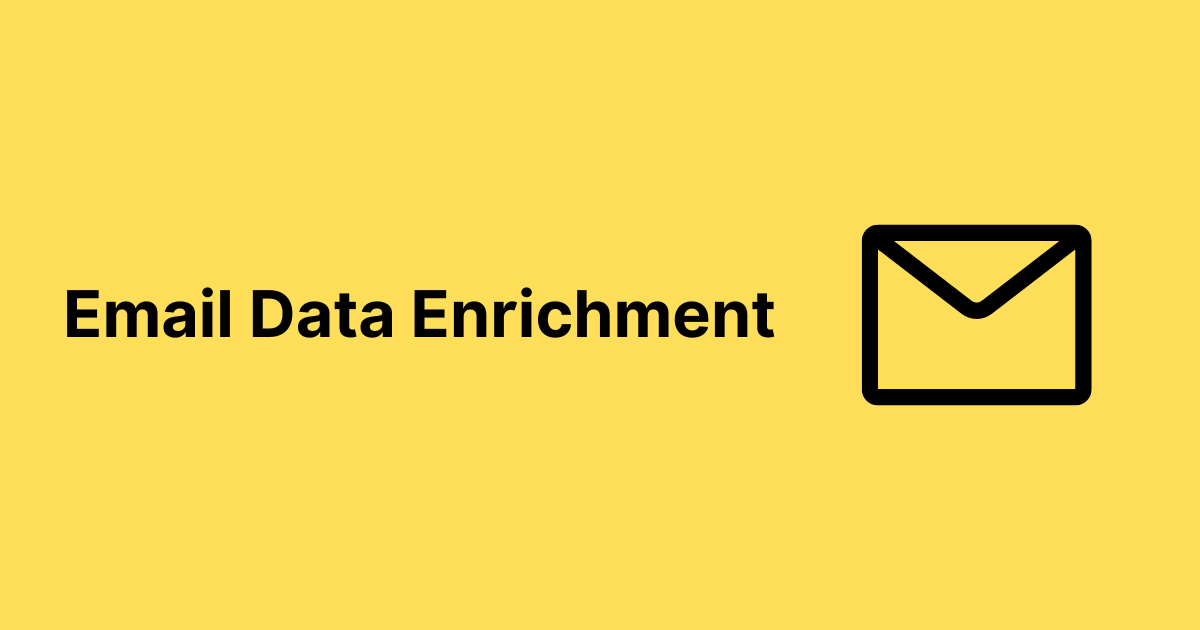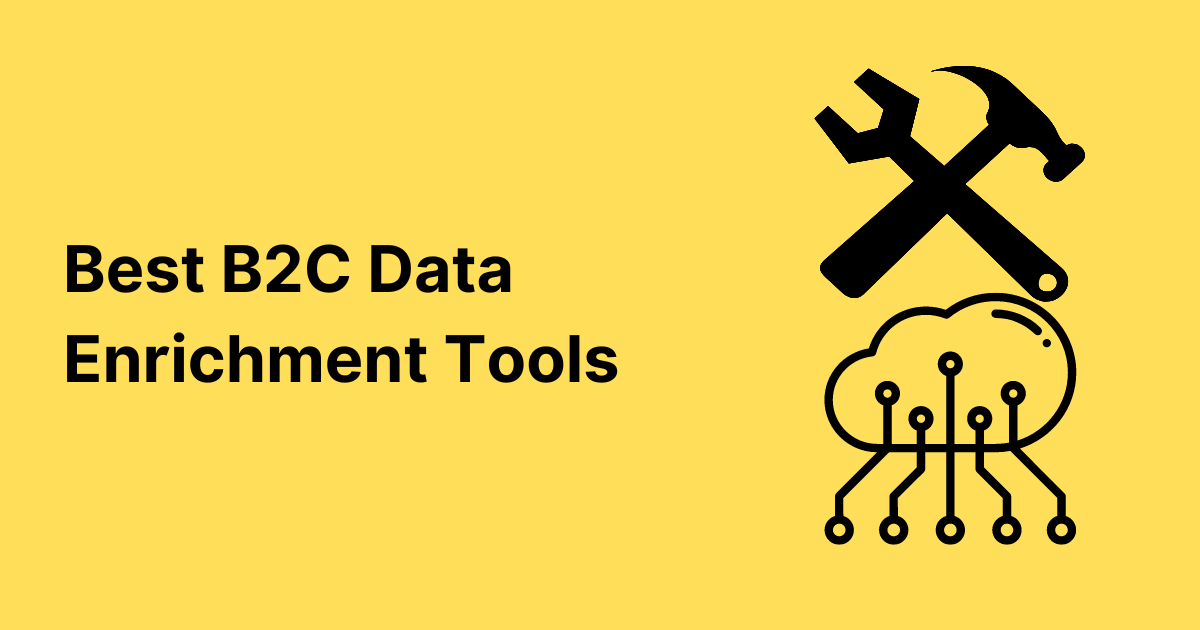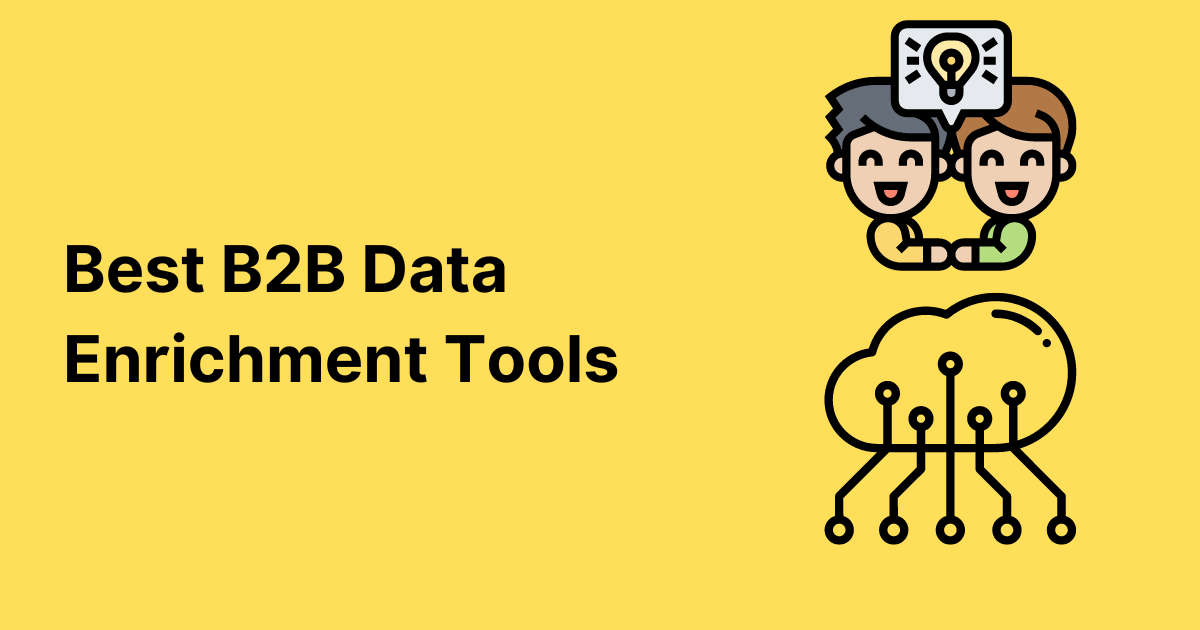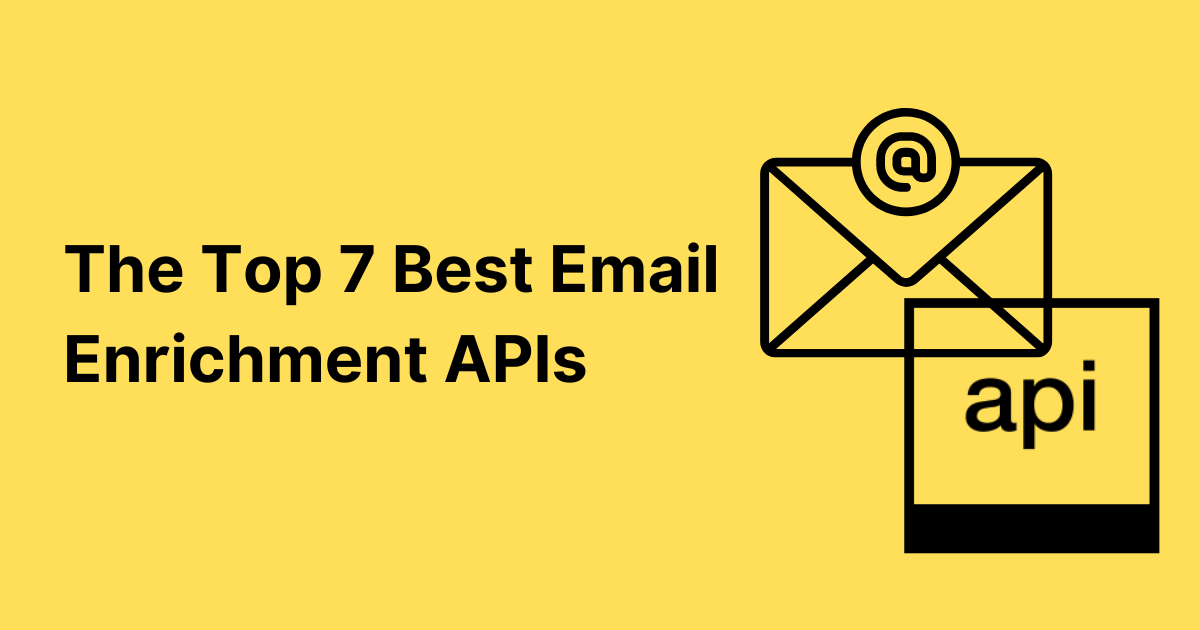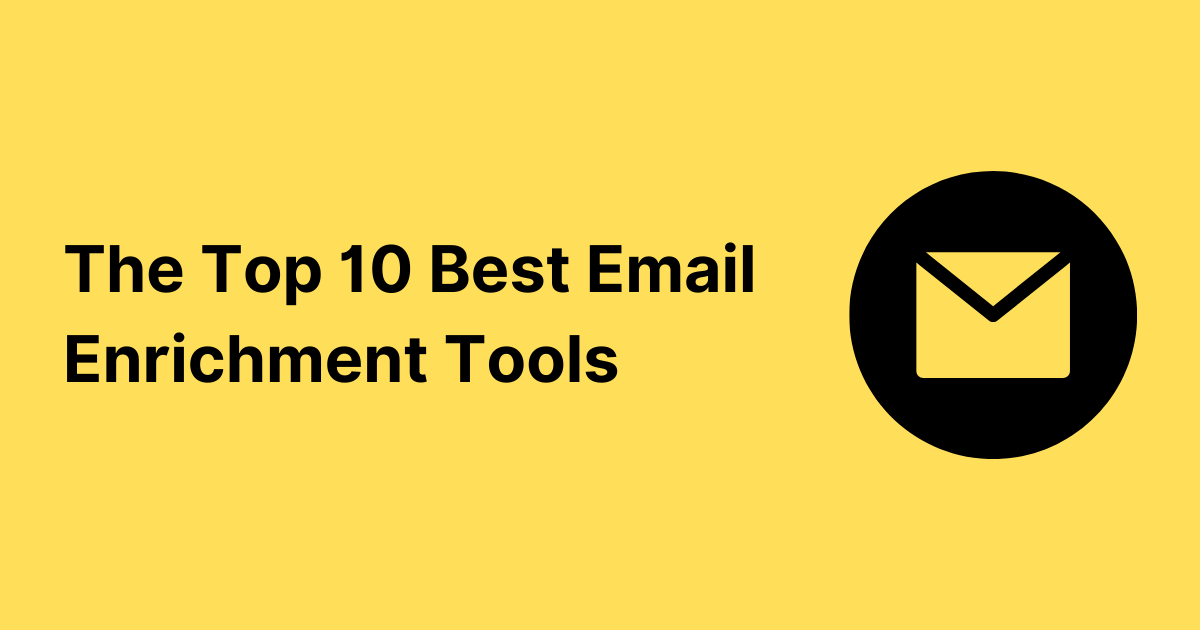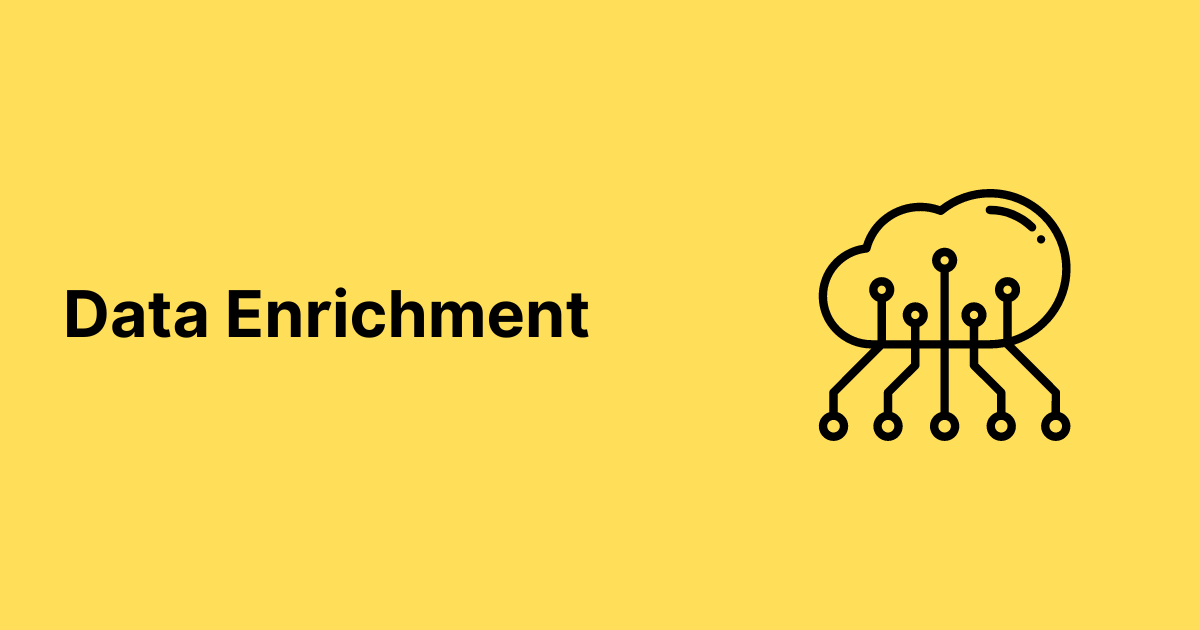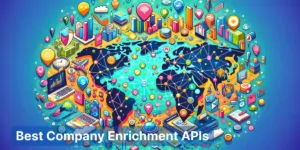You likely have a lot of first names, last names, and email addresses in your database. However, you may not have detailed profiles about each user’s purchasing behavior, click-through rate, and online activity.
Email data enrichment is the process of enhancing incomplete data about the users in your database.

Data enrichment is a valuable tool for marketing teams in any business niche. With more information about your users, you will have more success reaching out to qualified leads and can run a better-targeted marketing campaign that results in higher open rates, more sales, and increased user engagement.
In this article, we’ll dig into how email enrichment works and look at some of the other features of the best email enrichment tools for your business.
Key Takeaways
- Email enrichment is the process of improving the accuracy and completeness of data about your users. By filling in the gaps and verifying existing data, you can better understand your customers and improve your marketing campaigns.
- Data enrichment services can provide valuable information about a user when given that user’s email address, including their purchasing habits, geographic location, social media profiles, and more.
- B2B and B2C data enrichment have different rules regarding privacy and consent. B2C enrichment tools require explicit opt-in from users, while B2B enrichment only requires the ability for businesses to opt out of communications after their data has been shared.
- To ensure you are using a compliant data enrichment tool, carefully read the details of its terms and conditions to ensure it adheres to applicable privacy and data laws.
What is Email Data Enrichment?
Data enrichment tools allow you to access details about a user. You provide the email enrichment service provider with the email addresses that you need to complete information for, and they use data enrichment software to learn those users’ online habits, open rates, etc.
In this way, you can build a more complete picture of each user in your database. For example, say you are a clothing and apparel company getting ready for a large winter sale. In your database, you may have a list of names and email addresses for current customers and potential new contacts.
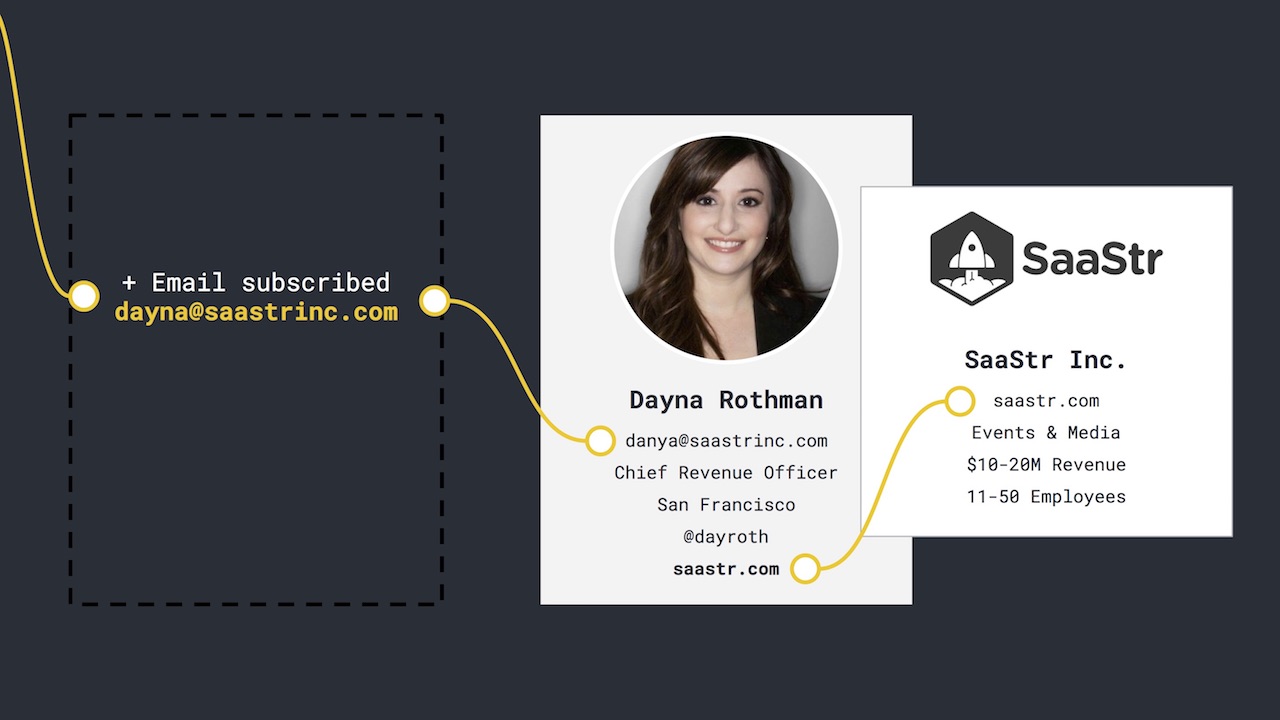
With data enrichment tools, you can learn where those potential customers live, what their last purchase was on your website, whether or not they are already subscribed to your newsletter and the types of apparel they typically buy.
With this information, you can run a highly effective campaign that only targets those potential customers who are likely to buy your winter wear (those who live in cold climates, for example, or those ideal customers who bought your winter apparel last year.)
Understanding Your Email List
It is incredibly important that have an intimate understanding of the habits, lifestyles, locations, and buying behavior of your email list. The better you know your users, the better you can target accounts for particular promotions. Enriched data can help you do this.
Segmenting Your Email List
One major benefit of email enrichment is that it allows you to optimize your database through segmentation. This is the process of dividing your users into groups based on certain characteristics. You may already have some segments in your mailing list – those who signed up through a free giveaway, vs those who signed up after buying a product, for example.
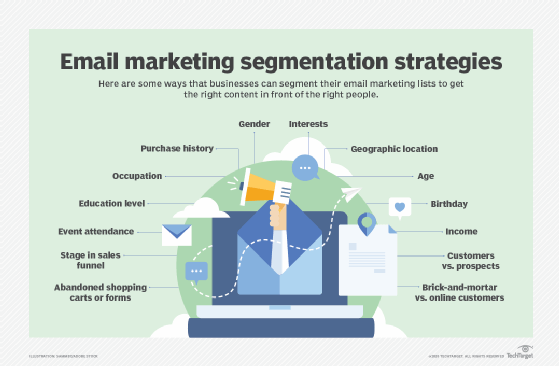
Segmenting for data enrichment is far more powerful because it allows you to segment along behavioral lines, geographical locations, etc. You can then send messages to only emails that appear in certain segments of your mailing list.
Email List Best Practices
Email enrichment tools also allow you to clean up your mailing list – removing duplicate emails, and unnecessary information. For example, if you are a company that primarily contacts your users through email, having users’ phone numbers may not be necessary.
You should be cleaning your contact database regularly, and you should also be verifying and validating all incoming email addresses whenever anyone new joins.
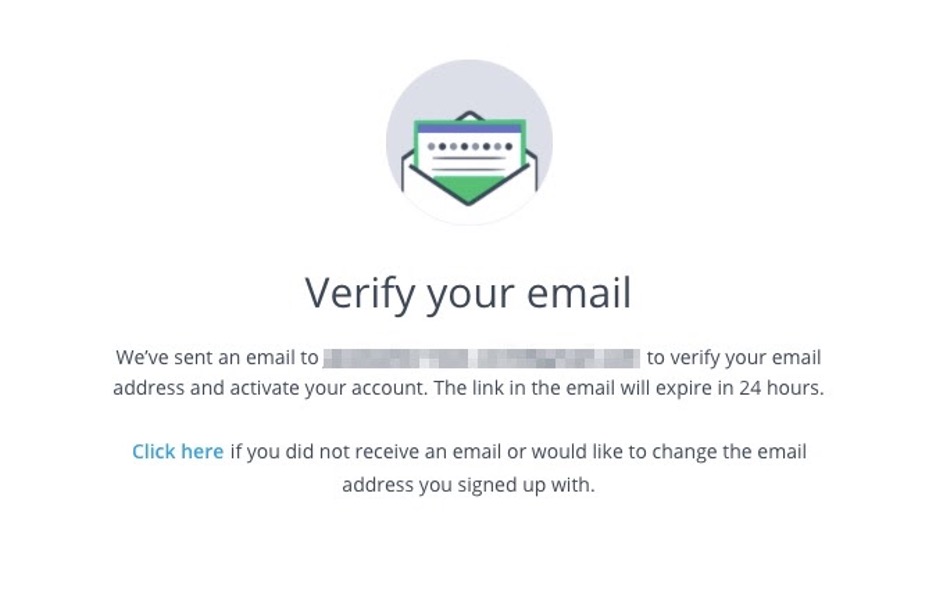
Email enrichment is not the same as email validation: validation is the process of ensuring that an email address is active and valid before you add them to other features in your database. An easy way to do this is through double opt-in. You can also use free or paid email verification APIs or tools to verify addresses in bulk or in real-time during sign-up.
Data Enrichment Techniques
There are several ways in which email data can be enriched.
Identifying Missing Data
The primary way in which data is enriched is by identifying and filling in missing information for your users. Although you may collect a first name for a user during sign-up, many users bypass this by entering empty spaces, emojis, nonsensical strings, and more.
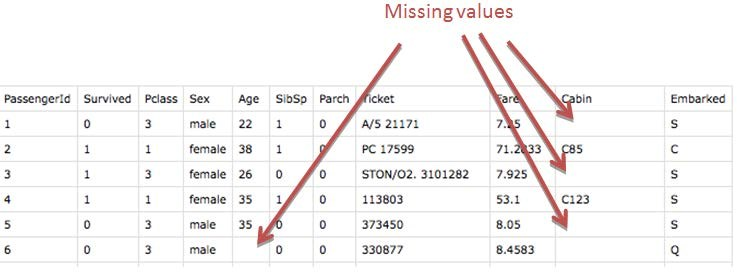
Data enrichment tools can help you to find these kinds of gaps in your information and fill them. Your emails will be more effective when you have all the contact details of a user and can address them by name.
Appending Data
The next way in which you can use enrichment tools to get enriched data is by appending new data to your existing database. This could include information like geographical location, phone numbers, company contact details, and previous purchase history.
Verifying Data Accuracy
Another use case for data enrichment tools is to verify the validity of your existing data. You might have outdated or inaccurate information about users. Running an audit of your database will leave you with only accurate data. Remember: this is not the same as verifying your users’ email addresses when they sign up, or running regular sweeps to remove invalid email addresses from your list.

Data Enrichment Sources
So now that you know how important enriched data is for your marketing campaigns, how do you go about getting that enriched data into your database? There are a few sources for this kind of data.
Third-Party Data Sources
You can pay third parties to provide enriched data to you. In exchange for a user’s email address, the third party can give you information like names, company names, job titles, and social media profiles.
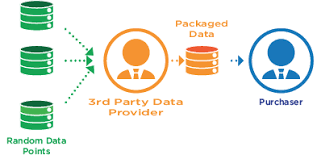
These companies have access to a huge amount of user data through partnerships and have usually built up a megabase of consumer data. The benefit of using a third-party data enrichment source is that the data you get will usually be of high quality. The downside is the cost, and that BToC and BToB legal prohibitions may apply when utilizing this data (more on this later.)
Public Data Sources
Public data enrichment sources are freely available and accessible to anyone. They can sometimes be a good way to enrich company data, however, typically they will not contain all the company details you need, or have very high-quality data.

First-Party Data Sources
This is usually the best way to do data enrichment, as all the information comes directly from the source, so you know it is accurate and complete, and that there is no legal prohibition to you using it.
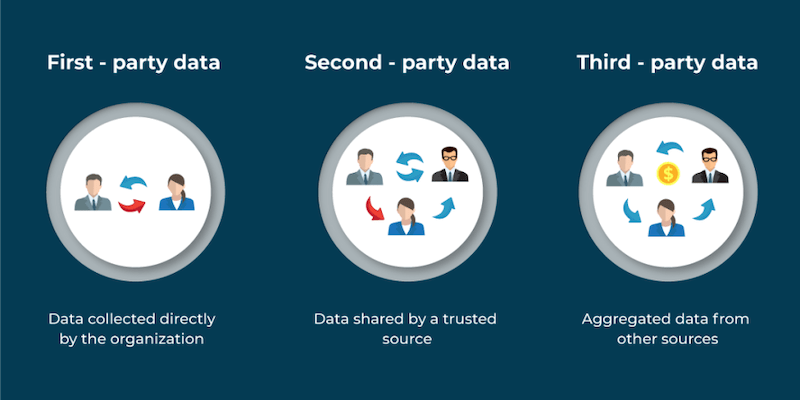
The downside to this approach is that it is costly and time-consuming, as it requires reaching out to contacts individually and asking them to provide data. It is unlikely that you will be able to do lead enrichment in this way for cold outreach, as your cold contacts will be unlikely to care enough about your company to provide enriched lead data.
Email Data Enrichment Tools
There are various email enrichment tools out there for sales and marketing teams to take advantage of. Let’s look at some of the most popular choices:
- Clearbit: This tool provides robust data enrichment capabilities, including real-time data validation and enrichment. It has a wide range of features, from providing email addresses, to job titles, company information, and more. Clearbit offers a free version and a paid version with more advanced features.
- Hunter: Known for its domain search capability, Hunter can also provide email verification and enrichment services, including detailed information like social media profiles, company information, and job titles. Hunter offers a free trial period with up to 50 requests per month.
- Snov.io: This tool provides a variety of services, including email searching, verification, and enrichment, as well as email drip campaigns. It allows businesses to verify and enrich vast amounts of data to find the right target for their marketing campaign.
- VoilaNorbert: Specializing in email verification and finding emails for leads, this tool can also provide robust contact information for leads such as job titles, company information, and social media profiles. It’s a user-friendly tool, with affordable pricing plans.
- NeverBounce: Offering comprehensive email verification and validation services, NeverBounce can help businesses identify invalid email addresses, reduce bounce rates, and drive better email deliverability. It’s an excellent tool for improving sender reputation, avoiding spam traps, and protecting user privacy.
Features to Look For in an Email Data Enrichment Tool
The most important thing to keep in mind when using a data enrichment tool is user privacy and security. There are some privacy concerns when it comes to using these services, so make sure that the service provider you choose is reputable and trustworthy, and that they comply with data protection laws and regulations.
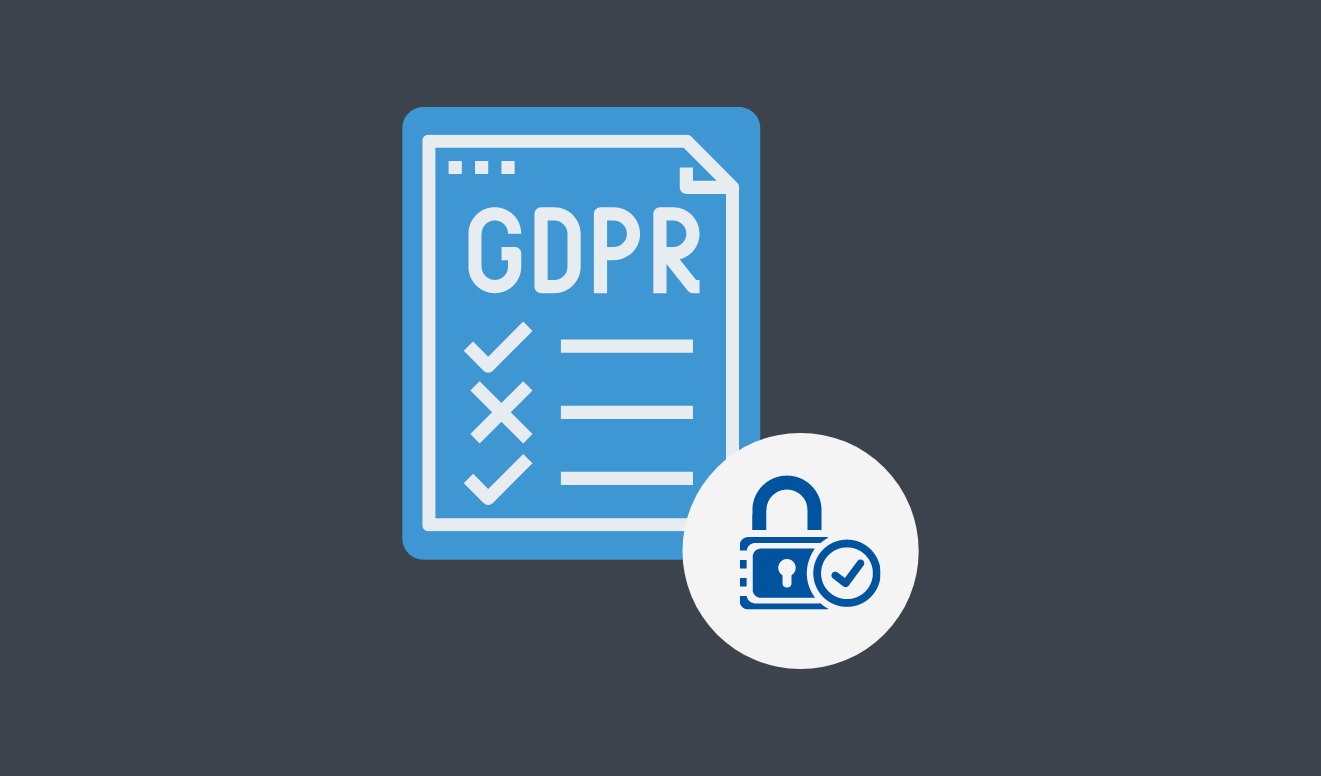
The best way to do this is to carefully read the terms and agreements and the company’s privacy policy. You can also conduct data protection impact assessments to ascertain the impact of using these services on your consumer data.
How to Choose the Right Tool for Your Business
There is no one-size-fits-all solution to finding the right data enrichment tool. You will need to evaluate your own needs and budget and research several options to find the right service provider advanced platform for you.
We recommend auditing your own needs and then choosing several providers based on those needs before narrowing down the options to fit your budget. This will prevent you and your sales and marketing team from ruling out potentially beneficial data enrichment tools based solely on price.
Implementing Email Data Enrichment
Let’s break down step by step how to implement your lead enrichment plan.
Consider the Legal Angles
There is a difference between B2B (Business to Business) and B2C (Business to Consumer) data enrichment. In B2C enrichment, there is a legal prohibition on transferring contact data from all-in-one platform or database to another without consent. In other words, the user must opt-in to their data being shared.
In B2B enrichment, the opt-out pattern is applied instead: you are legally authorized to email outreach prospects for professional email addresses for the profession in which the person is engaged. However, that person has a right to unsubscribe or opt out of any subsequent communications.
Choose a Service Provider
B2C databases used for enrichment primarily come from press sites, blogs, and news sites. B2B data comes from companies that specialize in renting contact files and databases from online agencies or database owners wishing to profit from them. Public databases are freely available.
Provide Email Addresses
Once you’ve chosen a provider, simply provide a list of email addresses for enrichment, and let the email enrichment tools do their job.
Email Data Enrichment Success Stories
Case Study: Email Enrichment and Validation by Flatworld
Flatworld Solutions, a data enrichment company, was able to assist a US-based business acquisition entrepreneur and attorney with support validating business owner data with a view to identifying new business opportunities. They outlined the process in this article.
Flatworld provided a free trial to the company to get a better understanding of their needs, then developed a solution that included the use of online tools like ZoomInfo and RocketReach to validate email addresses.

The team also used a data enrichment process to correct inaccurate email addresses and add information. When it wasn’t possible to validate or correct email or other data further, the data was eliminated from the database.
The client was satisfied with the fast turnaround, precise validation of lead scoring, the customer experience, and improved ability to identify potential new clients from their lead data.
Case Study: Outfunnel and Clearbit
Outfunnel, a data syncing and web tracking solution, used Clearbit to enrich their email data and wrote about the results in this article.
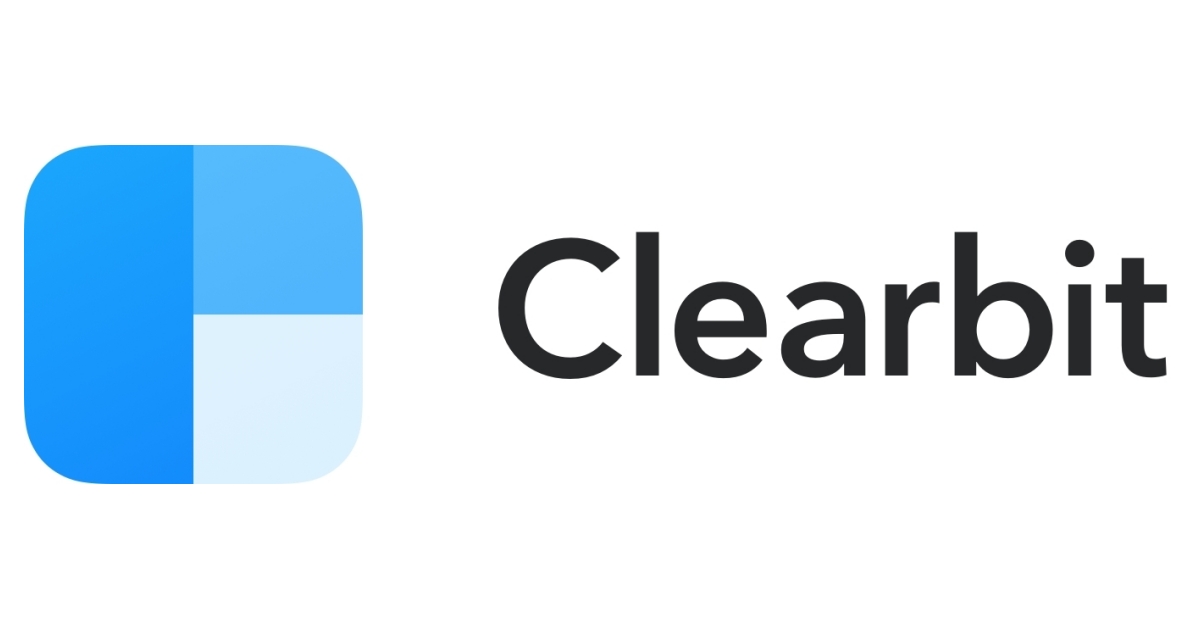
Clearbit was able to provide improved data values for about 5000 of the 8000 company name and company profile name entries in the Outfunnel database. Clearbit was able to help Outfunnel identify the conversion rates of paid signups across different countries, as well as across different industries. Clearbit also provides information about the estimated annual revenue of companies.
Privacy and Security Concerns
Once again, it is important to remember the difference between B2B and B2C enrichment. B2C data enrichment tools require explicit opt-in from users before their information can be shared. B2B data enrichment does not require explicit consent, however, an opt-out must be provided.
If the data enrichment tool you are using violates these prohibitions, you could be on the hook as well. Be extremely careful when evaluating your potential enrichment tool. Read the terms and agreements closely and do not engage with any lead database or contact records company that does not adhere to the law.
Frequently Asked Questions
What is email enrichment?
Email enrichment is the process of improving the accuracy and completeness of data about your users. Many companies have databases full of names and email addresses for their users but do not have detailed information about those users’ purchasing habits, geographical locations, social media profiles, technographic data, etc.
Email enrichment allows a company to fill in the gaps, as well as to verify the validity of existing data, and purge incorrect or incomplete data from the company size database.
What are data enrichment services?
A data enrichment service or API provider provides information about a user when given that user’s email address. There are different types of data enrichment services, including third-party services with access to megabases through various partnerships, public data sources, and first-party data enrichment tools.
Is data enrichment GDPR compliant?
There are different rules for B2B and B2C data enrichment. B2C enrichment tools require explicit opt-in from users before their information can be shared. B2B enrichment requires only the ability for businesses to opt out of communications after their data has been shared.
If you are considering using a data or email enrichment service, make sure you carefully read all the details of the terms and conditions to ensure they are compliant with the applicable privacy and data laws.
Conclusion
Having detailed information about your users and potential leads is the best way to run highly converting marketing campaigns that drive sales and produce results.
Email enrichment is a valuable way to get improved information about your customers and about prospective leads and professional opportunities. Email enrichment tools can easily provide you with accurate and up-to-date information in exchange for a user’s email.
Ensure that any data enrichment tool you use complies with the necessary legal prohibitions and privacy laws.
Experienced software engineers and avid supporters of the developer community, specializing in APIs.

